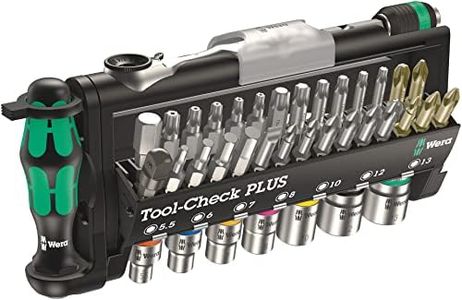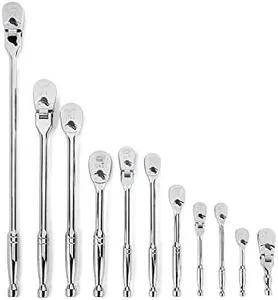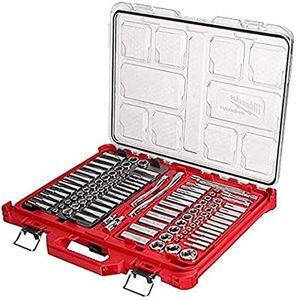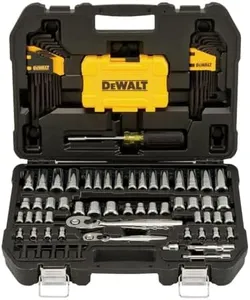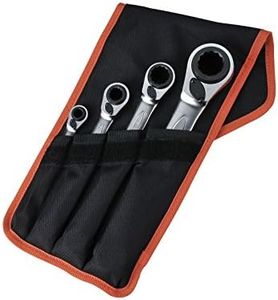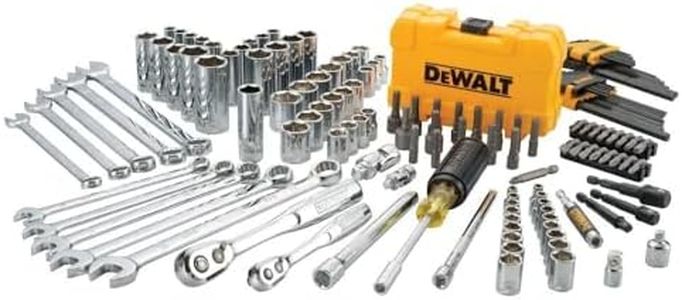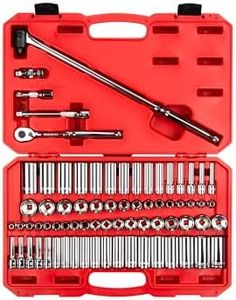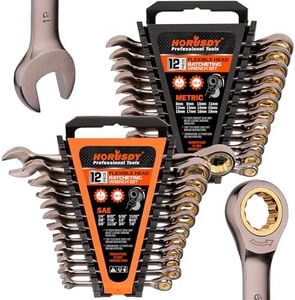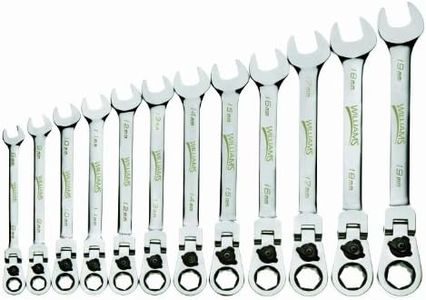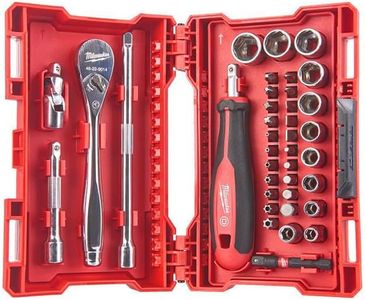We Use CookiesWe use cookies to enhance the security, performance,
functionality and for analytical and promotional activities. By continuing to browse this site you
are agreeing to our privacy policy
10 Best Ratchet Sets
From leading brands and best sellers available on the web.By clicking on a link to a third party's website, log data is shared with that third party.
Buying Guide for the Best Ratchet Sets
Choosing the right ratchet set can make your work with bolts, nuts, and fasteners much smoother, whether you're maintaining your car, doing home repairs, or working on DIY projects. It's important to find a set that matches the kinds of jobs you typically do, fits comfortably in your hand, and includes the sizes and types of tools you'll actually use. Understanding the differences in ratchet sets can help you avoid ending up with tools that are too basic or too advanced for your needs. The best approach is to get familiar with the key features before you start shopping so you can zero in on what really matters for your tasks.Drive SizeDrive size refers to the square fitting on the ratchet handle where the socket attaches, and it's measured in inches or millimeters. The most common sizes are 1/4-inch, 3/8-inch, and 1/2-inch. Smaller drives, like 1/4-inch, are best for lighter, more precise work in tight spaces, while 3/8-inch offers a good balance for most general household and automotive tasks. The 1/2-inch drive is suited for heavy-duty applications needing more torque, such as when working on car wheels or larger machinery. To decide, think about the typical jobs you'll use the set for: choose smaller drives for delicate or confined work, and larger ones for bigger, tougher bolts.
Number and Size Range of SocketsThis tells you how many individual sockets come in the set and what size bolts and nuts they’ll fit, and it usually covers a range measured in both metric and standard (SAE) units. A basic set covers common sizes, while larger sets include more specialized pieces. Smaller ranges work for simple tasks or if you know exactly which sizes you need, but broader ranges are better if you want to be prepared for a variety of jobs. Consider what you'll be working on most—cars, bikes, furniture, or appliances—and check what size fasteners those typically have to decide if a broader set is worthwhile.
Tooth Count (or Ratcheting Mechanism)The tooth count is the number of notches inside the ratchet gear, affecting how far you need to move the handle before the socket turns. Lower tooth counts, like 24-36, mean you need to swing the handle more per click, which works well for open spaces. Higher tooth counts, like 72 or more, allow for shorter movements, which is handy in tight spots. If you expect to work in confined spaces (like under the hood of a car), a higher tooth count will make your work easier, while lower tooth counts are fine if you have plenty of room to maneuver.
Material and FinishRatchet sets are usually made from types of steel, with finishes like chrome plating to resist rust and wear. Higher quality materials and finishes mean tools last longer and stay looking good. If you plan on using your set a lot or in environments where they might get wet or dirty, look for rust-resistant coatings. For more occasional or indoor use, basic finishes are often sufficient. Think about where and how often you'll use your set to judge how robust the finish needs to be.
Included AccessoriesAccessories might include extension bars, universal joints, adapters, or screwdriver bits, all of which expand what you can do with the set. Extensions help you reach awkward bolts, and adapters let you switch socket sizes. If your projects are more straightforward, you might not need many add-ons, but if you regularly tackle a mix of tasks (like automotive work, home repairs, or assembly), having extra accessories will save you from buying them separately. Reflect on the types of jobs you expect to tackle and choose a set that covers those needs.
Storage CaseA good storage case keeps your sockets organized and protected, making it easy to see if anything is missing and to carry everything to your workspace. Some cases are more durable or compact than others. If you plan on taking your set to different locations or want to keep your tools in good shape over time, pick a set with a sturdy, well-organized case. If your tools will stay mostly in one place, a simple holder might suffice.
